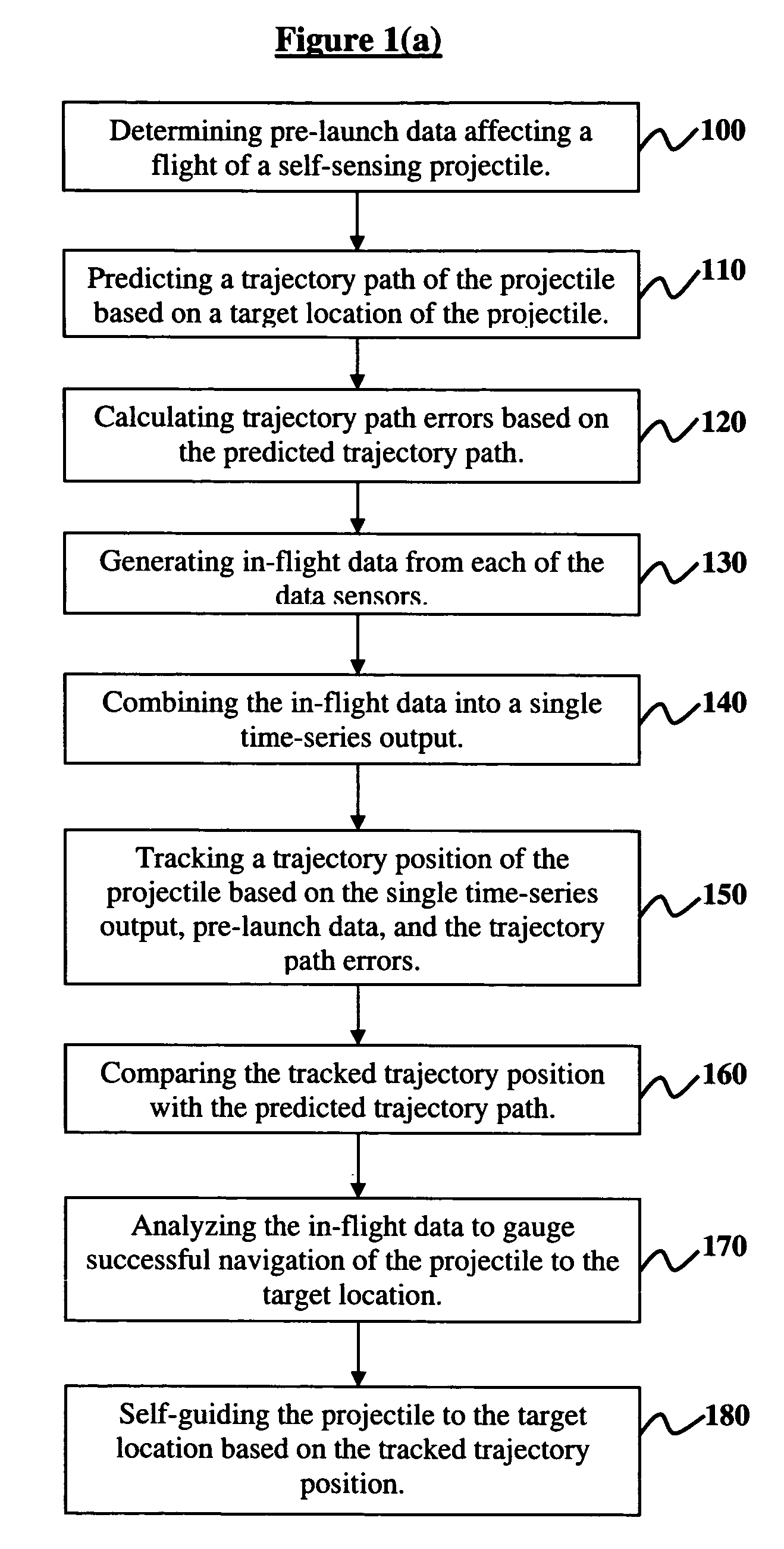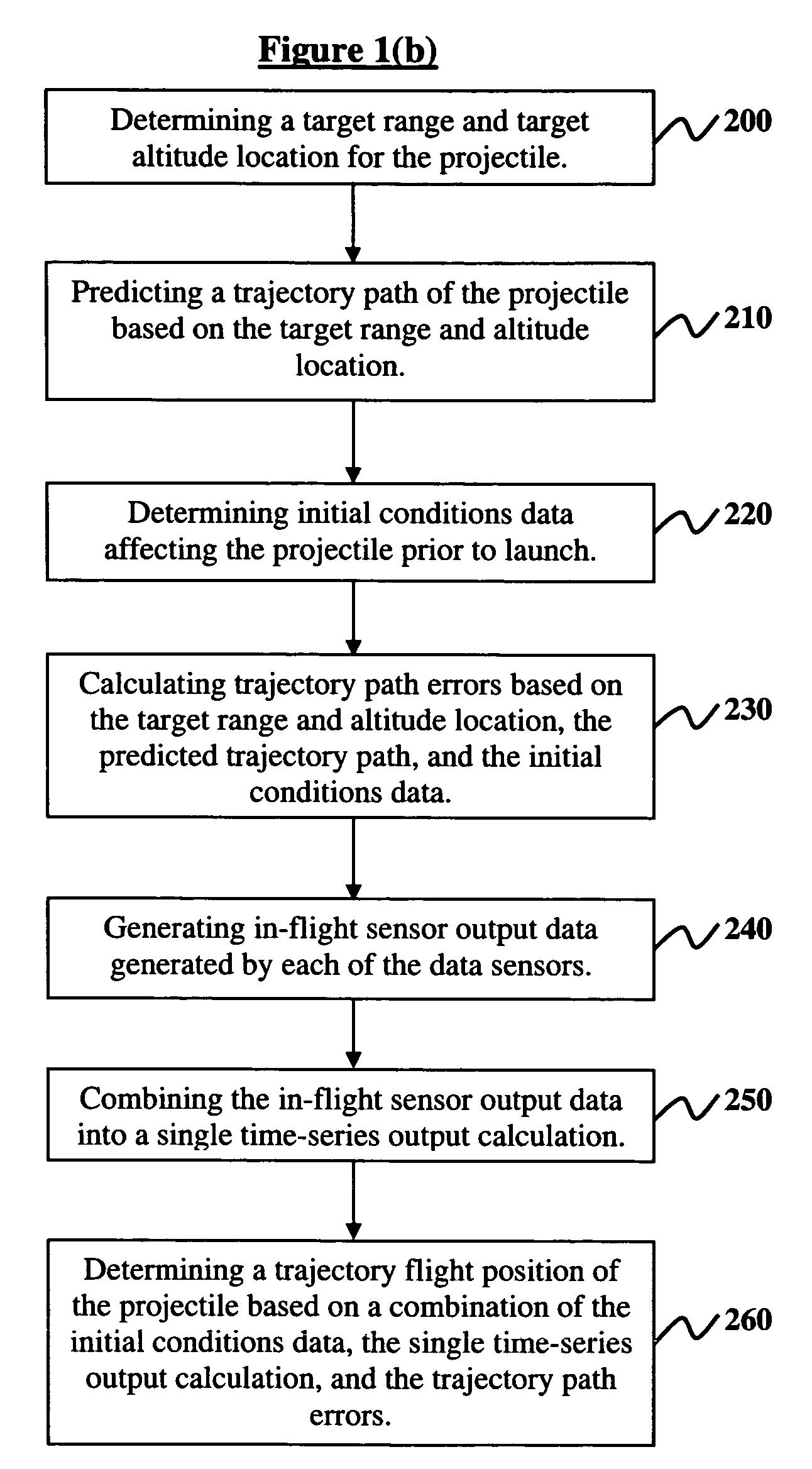System and method for in-flight trajectory path synthesis using the time sampled output of onboard sensors
a sensor and trajectory technology, applied in the field of sensor systems, can solve the problems of difficult to obtain highly accurate range or altitude predictions using only a single fuze sensor, easy jamming, and high range error of airburst lethality for targets under direct fire, so as to reduce the computational/information transfer burden placed on the fire control computer, the effect of superior sensor fusion capability and reduced data
- Summary
- Abstract
- Description
- Claims
- Application Information
AI Technical Summary
Benefits of technology
Problems solved by technology
Method used
Image
Examples
Embodiment Construction
[0043]The invention and the various features and advantageous details thereof are explained more fully with reference to the non-limiting embodiments that are illustrated in the accompanying drawings and detailed in the following description. It should be noted that the features illustrated in the drawings are not necessarily drawn to scale. Descriptions of well-known components and processing techniques are omitted so as to not unnecessarily obscure the invention. The examples used herein are intended merely to facilitate an understanding of ways in which the invention may be practiced and to further enable those of skill in the art to practice the invention. Accordingly, the examples should not be construed as limiting the scope of the invention. Referring now to the drawings, and more particularly to FIGS. 1 through 10, there are shown preferred embodiments of the invention.
[0044]FIG. 1(a) illustrates a flow diagram for a method of data fusion, wherein the method comprises determ...
PUM
 Login to View More
Login to View More Abstract
Description
Claims
Application Information
 Login to View More
Login to View More - R&D
- Intellectual Property
- Life Sciences
- Materials
- Tech Scout
- Unparalleled Data Quality
- Higher Quality Content
- 60% Fewer Hallucinations
Browse by: Latest US Patents, China's latest patents, Technical Efficacy Thesaurus, Application Domain, Technology Topic, Popular Technical Reports.
© 2025 PatSnap. All rights reserved.Legal|Privacy policy|Modern Slavery Act Transparency Statement|Sitemap|About US| Contact US: help@patsnap.com



